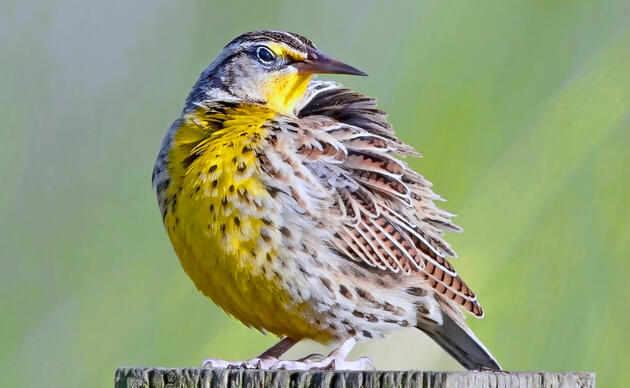Reporter, Audubon Magazine
On the right spring morning you might see Liza Grotelueschen walk the edge of a blackened grassland, stamping out any lingering embers. But don’t mistake the retired educator for an enemy of fire. Quite the opposite: She’s a staunch believer in its power to rejuvenate the Nebraska prairie she loves.
Grotelueschen is a member of the Loess Canyons Rangeland Alliance (LCRA), a cooperative burn association made up of 75 landowners who share time and equipment to save their disappearing grasslands. Over the past 16 springs, she has helped to burn vast swaths of prairie, including 600 acres she and her husband lease to ranchers. “I didn’t necessarily picture myself working on fires at 73 years old,” she says. “But it certainly is rewarding.”
Long before her time, Nebraska’s grasslands burned every few years, ignited by lightning or by Indigenous people to attract game animals that graze on new growth. These regular blazes incinerated seeds and woody seedlings sprouting amid the grass, relegating trees to rocky or wet places. But when European settlers arrived on the Great Plains, they doused any flames that might threaten their property and planted trees as windbreaks. In the absence of fire, trees matured and spread.
Grotelueschen and her neighbors began carefully restoring fire to the landscape after seeing the march of woody species displace prairie plants that feed wildlife and livestock alike.
“A grassland needs fire as much as it needs water,” says Dirac Twidwell, a University of Nebraska-Lincoln rangeland ecologist. “If you shut off water, it turns into a desert. If you shut off fire, it turns into woodlands.”
Grasslands are the planet’s least protected and most threatened biome, around 40 percent of which has already been lost in the Great Plains, mainly to crops like corn, soybeans, and wheat. More than 2 million acres of prairie are plowed under each year in the United States—four football fields’ worth every minute. But data show that woody species are nearly as big a threat as plows. Their spread is a major cause of the habitat loss that has driven a 50 percent population decline in North America’s grassland birds over the past half-century.
In recent years the Loess Canyons have become an experimental landscape where Twidwell and other scientists are rediscovering fire’s potential. Their research has confirmed that reinstating high-intensity blazes can halt the ecosystem’s shift to woodlands, documented a reemergence of grassland plants soon after a burn, and found that grasses remained the dominant vegetation 15 years later.
Their latest study, published early this year, provided more good news. Scientists compared 6 years of breeding bird surveys and satellite images of tree cover with data on 14 years of fire across nearly 338,000 acres. They found that bird diversity increased across 65 percent of the Loess Canyons region, with the greatest increases where prescribed burns had made the most headway in reducing tree cover.
“It’s really exciting to see these burns transforming the landscape and to be part of such an amazing conservation success story,” says Caleb Roberts, a U.S. Geological Survey biologist who led the study.
The results, Roberts says, provide the first evidence that fire has benefited grassland birds at this scale across this biologically unique region, which gets its name from loess—silty, fertile, yellowish-gray sediment that accumulates from windblown dust. When healthy, this mixed-grass prairie supports abundant wildlife, including the Burrowing Owl, Greater Prairie-Chicken, and Loggerhead Shrike. But when woody species encroach, they outcompete the native perennial plants that grassland birds need for food and shelter. They also provide perches for predators like raptors, a threat that causes some bird species to avoid the area.
Grotelueschen sees the improvement on her own land. “Just 10 days after our last burn we came around the corner and there were five elk grazing on the new grass,” she says. “We hear the bobwhite quail out there when we’re working now, and I never heard them before the first burn.”
Findings from the Loess Canyons are now informing prescribed-burn associations across the prairie and beyond. At least 60 landowner-led burn groups have formed in the Great Plains in the past three decades. “We’re all on the same page, trying to regain what we’ve lost to trees,” says rancher Scott Stout, burn boss for the LCRA and president of the Nebraska Prescribed Fire Council. There is a lot of work ahead: Tree cover increased across 185,000 square miles of grasslands and rangelands in the western United States from 1999 to 2018. Beyond the Great Plains, cooperatives are also cropping up in the Southeast and the West, using fire to combat invasive weeds and reduce the risk of catastrophic wildfires, among other threats to habitat and people.
Both Stout and Grotelueschen say that returning healthy fire to grasslands has benefits beyond improving habitat or livestock forage: It also brings people together. “The philosophy of these groups is neighbors helping neighbors,” Stout says. Dozens of people show up for Loess Canyons burn days. They share meals and stories, and there are roles for everyone from grandparents to kids, united in their common goal.
This story originally ran in the Summer 2022 issue as “Taking Up the Torch.” To receive our print magazine, become a member by making a donation today.






